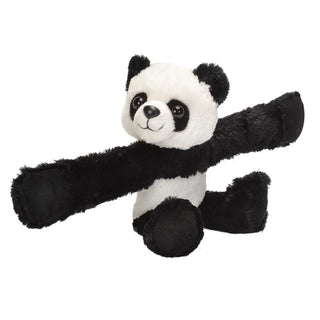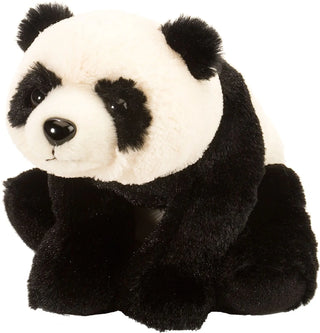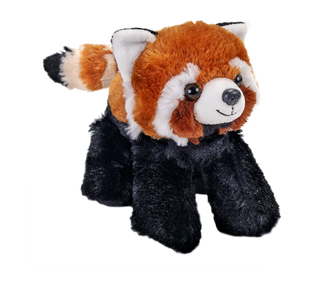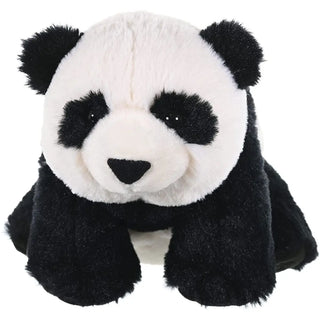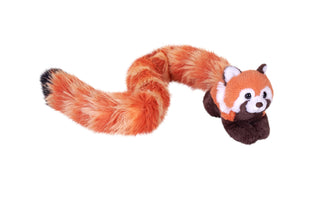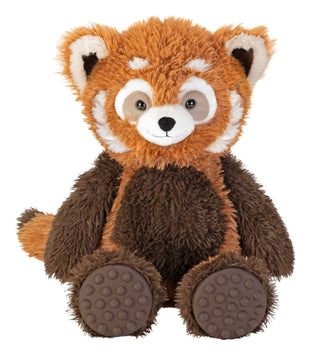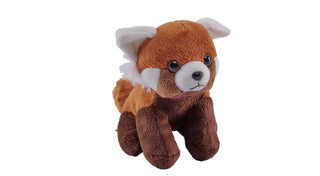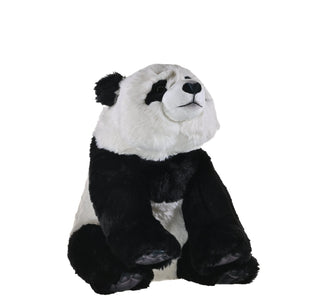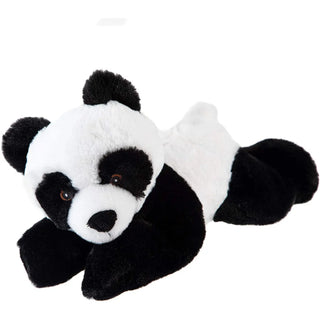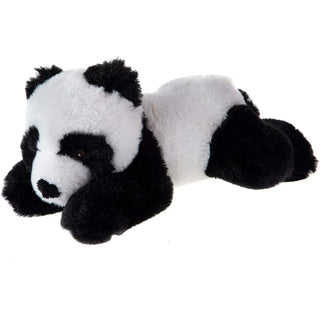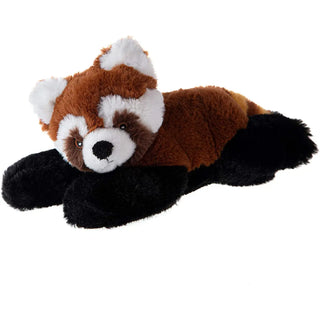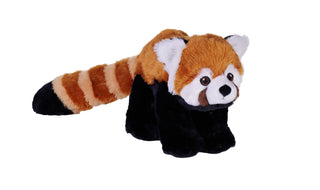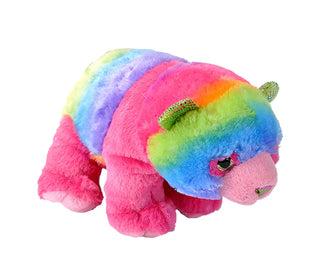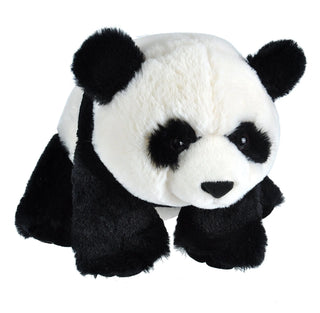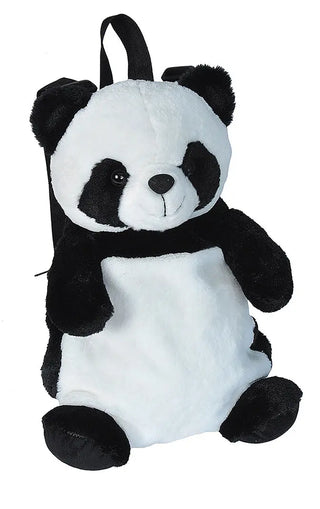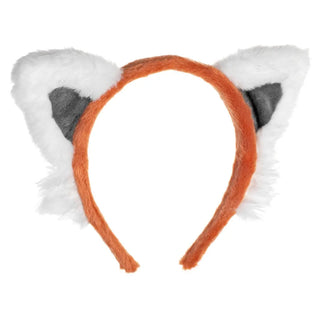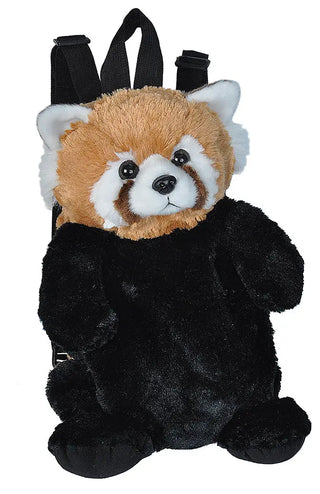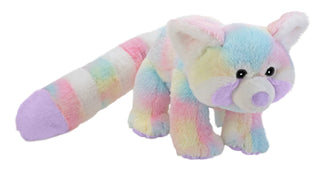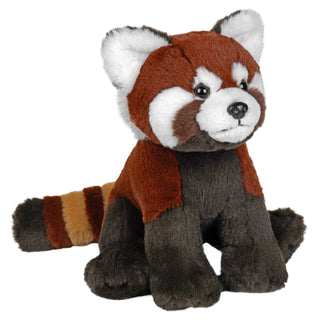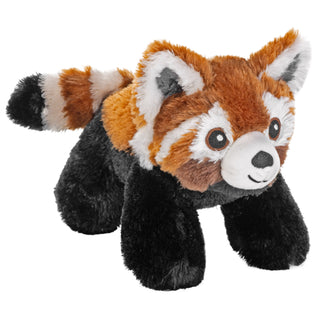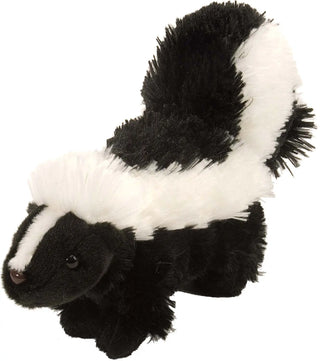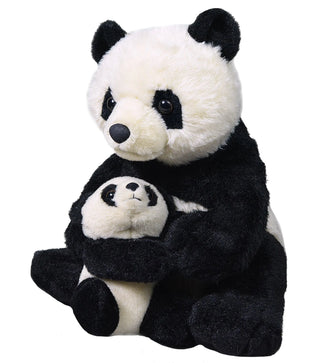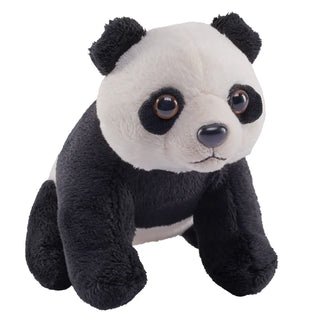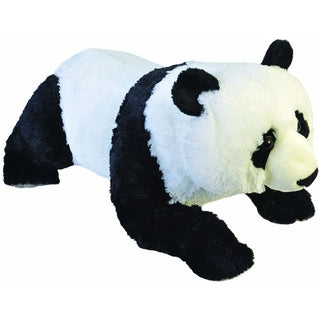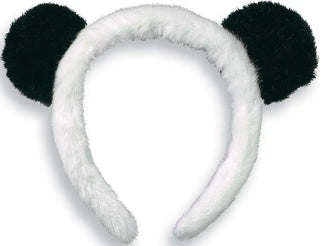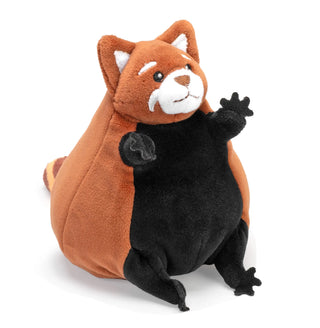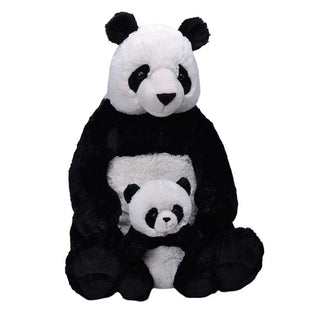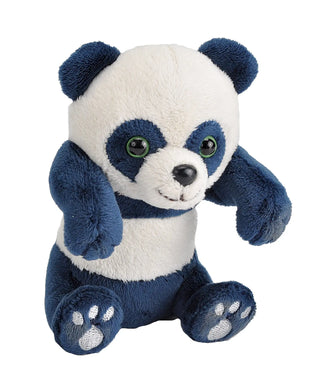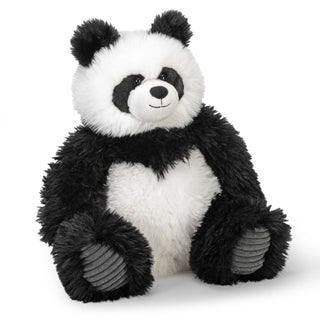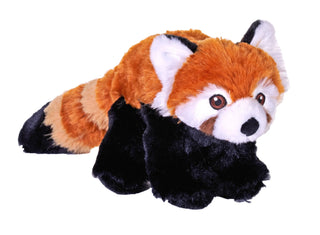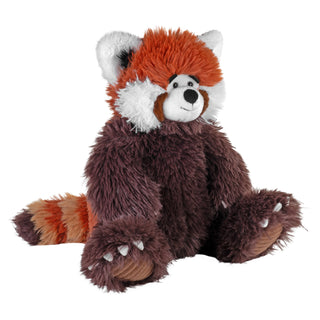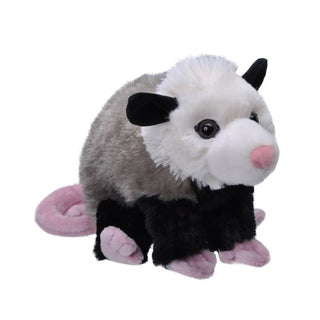Your Search For "panda" Revealed The Following:
Filter
Active Filters
Huggers Panda Stuffed Animal - 8"
$10.99
- Unit price
- / per
INCLUDES:
- Age:10M+
- AnimalType:Panda
- Brand:Huggers
- Easter
- Gender:Boy
- Gender:Girl
- Panda
- Size:8"
$10.99
- Unit price
- / per
Cuddlekins Eco Panda Stuffed Animal - 8"
$14.99
- Unit price
- / per
INCLUDES:
- Age:0+
- Brand:Cuddlekins Eco
- Features:Eco
- Gender:Boy
- Gender:Girl
- Size:8"
$14.99
- Unit price
- / per
Huggers Red Panda Stuffed Animal - 8"
$10.99
- Unit price
- / per
INCLUDES:
- Age:10M+
- AnimalType:Red Panda
- Brand:Huggers
- Easter
- Gender:Boy
- Gender:Girl
- Red Panda
- Size:8"
$10.99
- Unit price
- / per
Red Panda Stuffed Animal - 7"
$9.99
- Unit price
- / per
INCLUDES:
- Age:0+
- AnimalType:Red Panda
- Brand:Hug'ems
- Easter
- Gender:Boy
- Gender:Girl
- Red Panda
- Size:7"
$9.99
- Unit price
- / per
Panda Stuffed Animal - 7"
$9.99
- Unit price
- / per
INCLUDES:
- Age:0+
- AnimalType:Panda
- Brand:Hug'ems
- Easter
- Gender:Boy
- Gender:Girl
- Panda
- Size:7"
$9.99
- Unit price
- / per
Panda Stuffed Animal - 12"
$22.99
- Unit price
- / per
INCLUDES:
- Age:0+
- AnimalType:Panda
- Brand:Cuddlekins
- Gender:Boy
- Gender:Girl
- Panda
- Size:12"
$22.99
- Unit price
- / per
Red Panda Screen Grabber
$4.99
- Unit price
- / per
INCLUDES:
- Age:0+
- Brand:Screen Grabbers
- Gender:Boy
- Gender:Girl
- Size:5"
$4.99
- Unit price
- / per
Tailkins Red Panda Stuffed Animal - 40"
$23.99
- Unit price
- / per
INCLUDES:
- Age:0+
- Brand:Tailkins
- Gender:Boy
- Gender:Girl
- Size:40"
$23.99
- Unit price
- / per
Poppykins Red Panda Stuffed Animal - 14"
$55.99
- Unit price
- / per
INCLUDES:
- Age:0+
- Brand:Poppykins
- Gender:Boy
- Gender:Girl
- Size:14"
$55.99
- Unit price
- / per
Pocketkins Eco Red Panda Stuffed Animal - 5"
$8.99
- Unit price
- / per
INCLUDES:
- Age:0+
- Brand:Pocketkins Eco
- Features:Eco
- Gender:Boy
- Gender:Girl
- Size:5"
$8.99
- Unit price
- / per
Artist Collection Panda Stuffed Animal - 15"
$43.99
- Unit price
- / per
INCLUDES:
- Age:0+
- Brand:Artist Collection
- Gender:Boy
- Gender:Girl
- Size:15"
$43.99
- Unit price
- / per
Red Panda Stuffed Animal - 8"
$12.99
- Unit price
- / per
INCLUDES:
- Age:0+
- AnimalType:Red Panda
- Brand:Cuddlekins
- Gender:Boy
- Gender:Girl
- Red Panda
- Size:8"
$12.99
- Unit price
- / per
Panda Ecokins
$19.99
- Unit price
- / per
INCLUDES:
- Age:0+
- AnimalType:Panda
- Brand:Ecokins
- Gender:Boy
- Gender:Girl
- Panda
$19.99
- Unit price
- / per
Panda Ecokins Mini
$11.99
- Unit price
- / per
INCLUDES:
- Age:0+
- AnimalType:Panda
- Brand:Ecokins
- Gender:Boy
- Gender:Girl
- Panda
$11.99
- Unit price
- / per
Baby Panda Stuffed Animal - 8"
$12.99
- Unit price
- / per
INCLUDES:
- Age:0+
- AnimalType:Panda
- Brand:Cuddlekins
- Gender:Boy
- Gender:Girl
- Panda
- Size:8"
$12.99
- Unit price
- / per
Red Panda Ecokins Mini
$11.99
- Unit price
- / per
INCLUDES:
- Age:0+
- AnimalType:Red Panda
- Brand:Ecokins
- Gender:Boy
- Gender:Girl
- Red Panda
$11.99
- Unit price
- / per
Red Panda - Ecokins
$19.99
- Unit price
- / per
INCLUDES:
- Age:0+
- AnimalType:Red Panda
- Brand:Ecokins
- Gender:Boy
- Gender:Girl
- Red Panda
$19.99
- Unit price
- / per
Cuddlekins Eco Red Panda Stuffed Animal - 12"
$24.99
- Unit price
- / per
INCLUDES:
- Age:0+
- Brand:Cuddlekins Eco
- Features:Eco
- Gender:Boy
- Gender:Girl
- Size:12"
$24.99
- Unit price
- / per
Rainbowkins Panda
$24.99
- Unit price
- / per
INCLUDES:
- Age:0+
- Brand:Rainbowkins
- Gender:Boy
- Gender:Girl
- Size:12"
$24.99
- Unit price
- / per
Cuddlekins Eco Panda Stuffed Animal - 12"
$24.99
- Unit price
- / per
INCLUDES:
- Age:0+
- Brand:Cuddlekins Eco
- Features:Eco
- Gender:Boy
- Gender:Girl
- Size:12"
$24.99
- Unit price
- / per
Panda Backpack - 14"
$29.99
- Unit price
- / per
INCLUDES:
- Age:4+
- AnimalType:Panda
- Brand:Wild Republic Backpacks
- Gender:Boy
- Gender:Girl
- Panda
$29.99
- Unit price
- / per
Red Panda Stuffed Animal - 30"
$82.99
- Unit price
- / per
INCLUDES:
- Age:0+
- AnimalType:Red Panda
- Brand:Cuddlekins
- Gender:Boy
- Gender:Girl
- Red Panda
- Size:30"
$82.99
- Unit price
- / per
Headband Red Panda - 10"
$8.99
- Unit price
- / per
INCLUDES:
- Age:10M+
- Brand:Headband
- Gender:Boy
- Gender:Girl
- Size:10"
$8.99
- Unit price
- / per
Earthkins Red Panda Stuffed Animal - 15"
$40.99
- Unit price
- / per
INCLUDES:
- Age:0+
- Brand:Earthkins
- Gender:Boy
- Gender:Girl
- Size:15"
$40.99
- Unit price
- / per
Colorful Red Panda Stuffed Animal - 12"
$25.99
- Unit price
- / per
INCLUDES:
- Age:0+
- AnimalType:Red Panda
- Brand:Sweet & Sassy
- Gender:Boy
- Gender:Girl
- Red Panda
- Size:12"
$25.99
- Unit price
- / per
Red Panda Backpack - 14"
$29.99
- Unit price
- / per
INCLUDES:
- Age:4+
- AnimalType:Red Panda
- Brand:Wild Republic Backpacks
- Gender:Boy
- Gender:Girl
- Red Panda
$29.99
- Unit price
- / per
Mellowkins Red Panda Stuffed Animal - 12"
$24.99
- Unit price
- / per
INCLUDES:
- Age:0+
- Brand:Mellowkins
- Gender:Boy
- Gender:Girl
- Size:12"
$24.99
- Unit price
- / per
Earthkins Mini Red Panda Stuffed Animal - 8"
$22.99
- Unit price
- / per
INCLUDES:
- Age:0+
- Brand:Earthkins Mini
- Gender:Boy
- Gender:Girl
- Size:8"
$22.99
- Unit price
- / per
Ecofuzzies Red Panda Stuffed Animal - 7"
$14.99
- Unit price
- / per
INCLUDES:
- Age:0+
- Brand:Ecofuzzies
- Gender:Boy
- Gender:Girl
- Size:7"
$14.99
- Unit price
- / per
Zip Polybag of Asian Figurines
$21.99
- Unit price
- / per
INCLUDES:
- Age:3+
- Brand:Wild Republic Polybags
- Features:Zipped
- Gender:Boy
- Gender:Girl
$21.99
- Unit price
- / per
Skunk Stuffed Animal - 8"
$12.99
- Unit price
- / per
INCLUDES:
- Age:0+
- AnimalType:Skunk
- Brand:Cuddlekins
- Gender:Boy
- Gender:Girl
- Size:8"
- Skunk
$12.99
- Unit price
- / per
The Hidden Woodlands Trail Bundle
Regular price
$57.99
$64.95
Save 11%
- Unit price
- / per
INCLUDES:
- Cuddlekins Mini Black Bear 8"
- Ecokins Wolf 12"
- Flipkins Raccoon 5"
- Hug'Ems Mini Red Panda 7"
- Huggers Red Fox 8"
Regular price
$57.99
$64.95
Save 11%
- Unit price
- / per
Panda - Mom & Baby 12"
$40.99
- Unit price
- / per
INCLUDES:
- Age:0+
- AnimalType:Panda
- Brand:Mom & Baby
- Gender:Boy
- Gender:Girl
- Panda
- Size:12"
$40.99
- Unit price
- / per
Pocketkins Eco Panda - 5"
$8.99
- Unit price
- / per
INCLUDES:
- Age:0+
- Brand:Pocketkins Eco
- Easter
- Features:Eco
- Gender:Boy
- Gender:Girl
- Size:5"
$8.99
- Unit price
- / per
Panda Stuffed Animal - 30"
$82.99
- Unit price
- / per
INCLUDES:
- Age:0+
- AnimalType:Panda
- Brand:Cuddlekins
- Gender:Boy
- Gender:Girl
- Panda
- Size:30"
$82.99
- Unit price
- / per
Headband Panda - 10"
$8.99
- Unit price
- / per
INCLUDES:
- Age:10M+
- Brand:Headband
- Gender:Boy
- Gender:Girl
- Size:10"
$8.99
- Unit price
- / per
Flipkins Red Panda Stuffed Animal - 5"
$10.99
- Unit price
- / per
INCLUDES:
- Age:0+
- Brand:Flipkins
- Gender:Boy
- Gender:Girl
- Size:5"
$10.99
- Unit price
- / per
Panda - Jumbo Mom & Baby 30"
$120.99
- Unit price
- / per
INCLUDES:
- Age:0+
- AnimalType:Panda
- Brand:Jumbo Mom & Baby
- Gender:Boy
- Gender:Girl
- Panda
- Size:30"
$120.99
- Unit price
- / per
Panda Screen Grabber
$4.99
- Unit price
- / per
INCLUDES:
- Age:0+
- Brand:Screen Grabbers
- Gender:Boy
- Gender:Girl
- Size:5"
$4.99
- Unit price
- / per
Snuggleluvs Panda Stuffed Animal - 15"
$46.99
- Unit price
- / per
INCLUDES:
- Age:0+
- Brand:Snuggleluvs
- Gender:Boy
- Gender:Girl
- Size:15"
$46.99
- Unit price
- / per
Cuddlekins Eco Red Panda Stuffed Animal - 8"
$14.99
- Unit price
- / per
INCLUDES:
- Age:0+
- Brand:Cuddlekins Eco
- Features:Eco
- Gender:Boy
- Gender:Girl
- Size:8"
$14.99
- Unit price
- / per
Snuggleluvs Red Panda Stuffed Animal - 15"
$50.99
- Unit price
- / per
INCLUDES:
- Age:0+
- Brand:Snuggleluvs
- Gender:Boy
- Gender:Girl
- Size:15"
$50.99
- Unit price
- / per
Opossum Stuffed Animal - 8
$12.99
- Unit price
- / per
INCLUDES:
- Age:0+
- AnimalType:Opossum
- Brand:Cuddlekins
- Gender:Boy
- Gender:Girl
- Opossum
- Size:8"
$12.99
- Unit price
- / per
You're viewing 1-43 of 43 results

